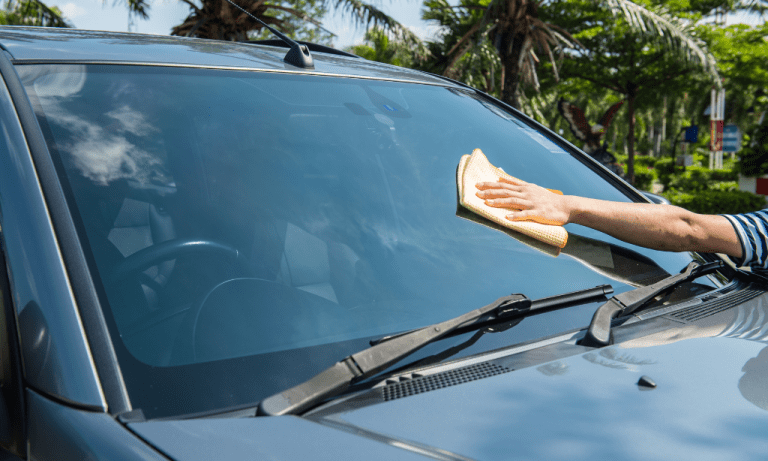Does Self Etching Primer Work on Chrome? Discover the Ultimate Solution!
Yes, self-etching primer is effective for use on chrome surfaces. When applied correctly, it creates a strong bond that promotes paint adhesion and prevents corrosion.
This type of primer contains chemicals that etch into the chrome surface, providing a rough texture for better paint grip. It is essential to clean and prepare the chrome surface thoroughly before using self-etching primer to ensure proper adhesion. Additionally, applying multiple thin coats allows for better coverage and a smoother finish.
Using self-etching primer on chrome is an excellent way to achieve long-lasting paint adhesion and protection against rust and deterioration.
Understanding Self Etching Primer
Self etching primer is a popular product used in the automotive industry, but does it work on chrome? Understanding how self etching primer works and its benefits on different materials can help shed light on this question. Let’s dive in!
Self Etching Primer Explained:
- Self etching primer is a specially formulated type of primer that contains acid.
- It is designed to chemically etch into the surface it is applied to, creating a strong bond between the primer and the material.
- The acid in the primer helps remove any impurities and contaminants, ensuring a clean surface for painting.
- This type of primer is typically used on bare metal surfaces, such as steel or aluminum, to enhance paint adhesion.
How Self Etching Primer Works On Various Surfaces:
- On bare metal surfaces: Self etching primer works by creating a strong bond with the metal, preventing rust and ensuring paint longevity.
- On chrome surfaces: While self etching primer can adhere to chrome to some extent, it may not provide the best results. Chrome is a smooth and hard surface, making it difficult for the primer to etch and form a strong bond. In such cases, it is recommended to use a primer specifically formulated for chrome surfaces.
Benefits Of Using Self Etching Primer On Different Materials:
- Enhanced paint adhesion: The acid in self etching primer creates a strong bond between the primer and the material, ensuring better paint adhesion and durability.
- Protection against rust: By etching into bare metal surfaces, self etching primer helps prevent rust formation, prolonging the lifespan of the painted surface.
- Improved durability: Using self etching primer can help the paint withstand harsh environmental conditions and everyday wear and tear, ensuring a long-lasting finish.
When it comes to using self etching primer on chrome surfaces, it’s important to consider alternative options that are specifically designed for chrome. While self etching primer can adhere to chrome to some degree, using a chrome-specific primer will provide better results and enhance the overall finish.
So, if you’re looking to paint chrome, it’s best to opt for a primer that is designed specifically for that surface.
Self etching primer is an excellent choice for bare metal surfaces, providing enhanced paint adhesion and protection against rust. However, when it comes to chrome surfaces, it’s recommended to use a primer formulated specifically for chrome for the best results.
Evaluating Chrome As A Surface For Self Etching Primer
Chrome is a popular material known for its shiny and reflective finish, making it a favored choice for various applications such as automotive detailing, household fixtures, and even home decor. However, when it comes to applying self etching primer, there are a few things to consider.
Let’s explore the characteristics of chrome as a surface, examine its compatibility with self etching primer, and delve into the challenges and considerations associated with using this primer on chrome surfaces.
Characteristics Of Chrome As A Surface:
- Smooth and glossy: Chrome surfaces are smooth and possess a high luster, adding a sleek and polished look to the objects they adorn.
- Non-porous: Chrome is a non-porous material, meaning it doesn’t have microscopic openings or pores that allow substances to penetrate easily.
- Excellent corrosion resistance: Chrome is highly resistant to corrosion, which is one of the reasons it is often used in automotive applications.
Does Self Etching Primer Adhere Well To Chrome?
- Enhanced adhesion: Self etching primers are specifically formulated to promote adhesion to metal surfaces by etching into the surface and forming a strong bond. While they work well on a variety of metal substrates, the adhesion to chrome can be a bit challenging.
- Less effective on smooth surfaces: Chrome’s smooth and non-porous nature can make it difficult for self etching primer to adhere firmly. The lack of microscopic irregularities hinders the primer’s ability to form a strong bond with the surface.
- Proper surface preparation is crucial: To improve adhesion, it is crucial to properly prepare the chrome surface before applying self etching primer. This may involve sanding or scuffing the surface to create small scratches or roughness, providing the primer with a better grip.
Challenges And Considerations When Using Self Etching Primer On Chrome Surfaces:
- Peeling or flaking: Due to the inherent challenges of adhesion on smooth chrome surfaces, self etching primer may peel or flake off over time if not applied or prepared correctly.
- Compatibility with chrome plating: If the chrome surface has a chrome plating layer, the primer’s ability to bond may further be hindered due to the plating’s hardness and non-porosity. In such cases, alternative primers or surface preparation methods may be required.
- Blending primer and chrome: Achieving a seamless transition between the primer and chrome can be tricky, especially when dealing with intricate or curved surfaces. Special care and precision are needed during the application process to avoid visible primer lines or imperfections.
While self etching primer can offer enhanced adhesion on various metal surfaces, its effectiveness on smooth and non-porous chrome surfaces presents unique challenges. Before attempting to apply self etching primer on chrome, thorough surface preparation and careful application techniques are essential for achieving optimal adhesion and a smooth finish.
Conclusion
Self-etching primer is not the most effective option for chrome surfaces. While it may adhere to the chrome initially, it tends to peel and bubble over time. The acid in the primer can also cause damage to the chrome, leading to corrosion and a deteriorating appearance.
For a more reliable and long-lasting result, it is recommended to use a specialized chrome primer instead. These primers are specifically formulated to bond with the chrome surface, providing better adhesion and protection against corrosion. Additionally, it is crucial to properly prepare the chrome surface before priming by thoroughly cleaning and lightly sanding it.
By following these steps and using the right primer, you can achieve a flawless finish and extend the lifespan of your chrome surfaces.
- Will Brake Cleaner Remove Paint? A Comprehensive Guide - June 20, 2025
- Acetone’s Role In Auto Repair And Maintenance - June 20, 2025
- Acetone On Car Paint: A Comprehensive Guide - June 20, 2025


